The first modern Asian-helmed Pixar film was released on March 11, 2022 on Disney+. The film is aptly titled "Turning Red."
“Turning Red”: Director Domee Shi’s First Feature Film
"Turning Red" is directed by Chinese-Canadian animator and director Domee Shi.
This movie marks Shi’s first full-length feature directorial debut. It is also Pixar’s first film to ever be directed solely by a woman.
Notable voice actors who make up the cast are Sandra Oh and Wai Ching Ho.
You may know Shi from the immensely popular 2018 short film “Bao.”
"Bao" gained critical acclaim for its depiction of “empty nest syndrome" from the lens of an immigrant parent. It was also the first Pixar short film to be directed by a woman.
It won the Academy Award for Best Animated Short Film.
 The poster for Domee Shi's short film "Bao"
The poster for Domee Shi's short film "Bao"
A Spoiler-Free Synopsis of "Turning Red"
Set in Toronto during 2002, the story focuses on Meilin Lee, nicknamed Mei, a young Chinese teen. Mei navigates learning how to be her own person while being a dutiful and obedient daughter.
To make matters more difficult, she turns into a giant red panda when emotional. This power stems from her ancestral roots that have a spiritual connection to red pandas.
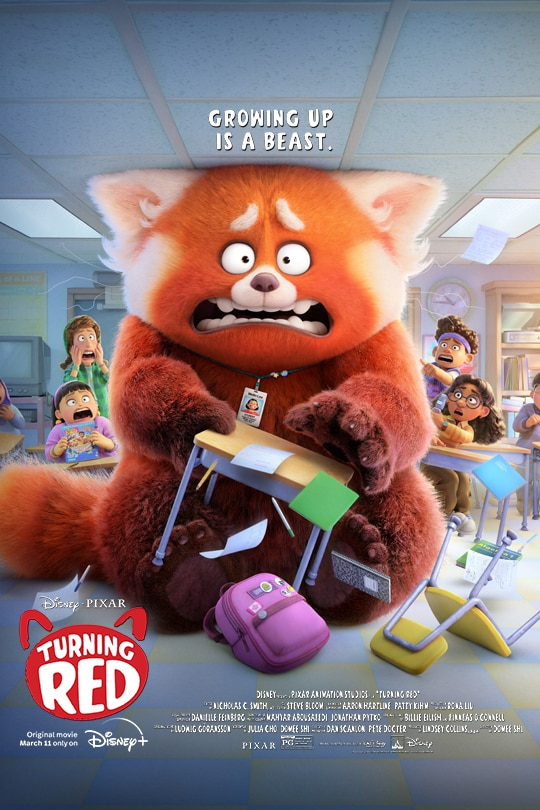 A "Turning Red" official poster
A "Turning Red" official poster
The Clash of Traditional Chinese Ideals and Western Values
The story of “Turning Red” is not only relatable to Chinese teenagers. Young girls going through the tumultuous chaos that puberty brings can also relate.
The movie opens on a happier note. It showcases Mei’s confidence and success in school as well as her role as an assistant temple keeper in her family temple.
Portrayed as the perfect dutiful daughter, there is more to Mei than meets the eye.
As the film progresses, we discover the inner workings of Mei independent of her mother’s strict traditional values. Influenced by Western culture and her friends, Mei's personal interests conflict in her relationship with her mother.
This is further exacerbated when she finally turns into a giant red panda. It is symbolic of her going through puberty.
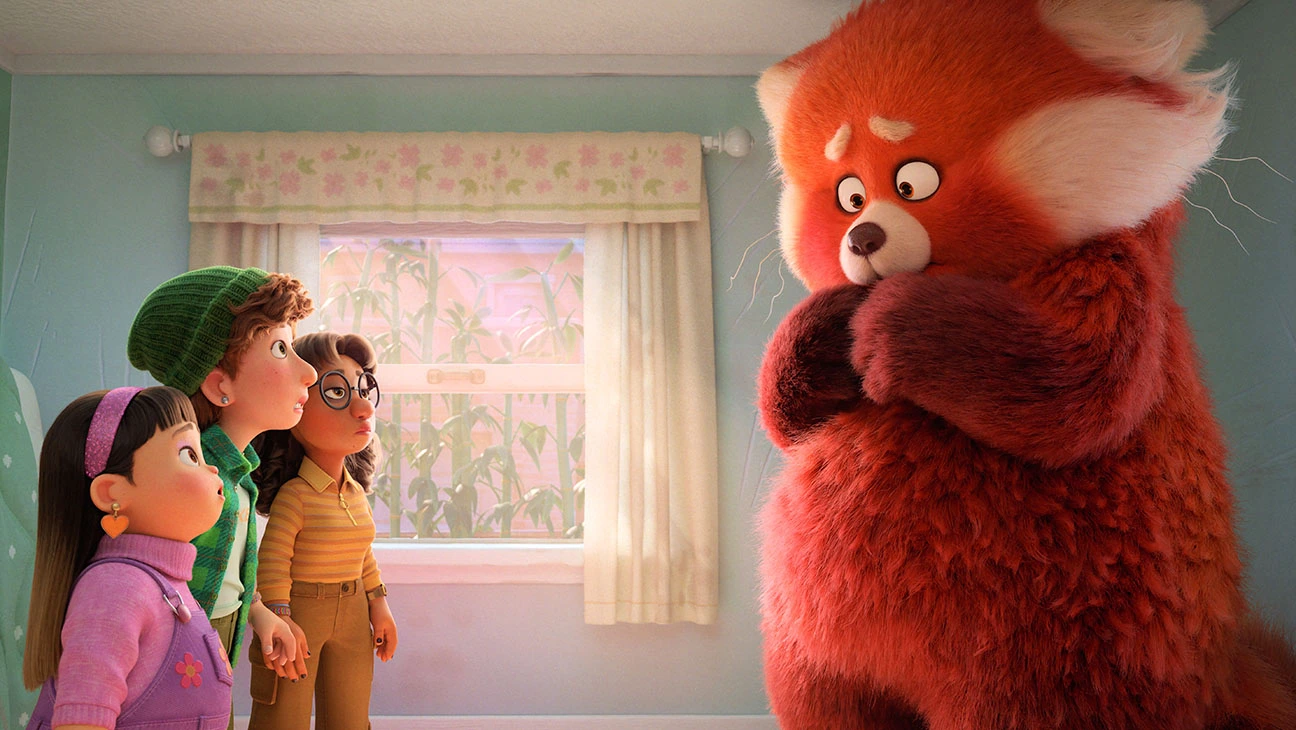 Mei reveling her red panda to her friends
Mei reveling her red panda to her friends
A Tasteful Depiction of Puberty and Growth
This is the first Pixar film to truly touch on this part of a young girl’s life. I believe that they did so successfully.
Shi and fellow screenwriter Julia Cho tastefully cover the shame and embarrassment that many girls feel when going through this time in their lives. They made sure to indicate that these feelings are normal and not something to be ashamed of.
“Turning Red” also covers how these physical changes are also emotional and mental. Mei discovers her love of boys, rebellion and independence after living her whole life striving to be perfect for her mother.
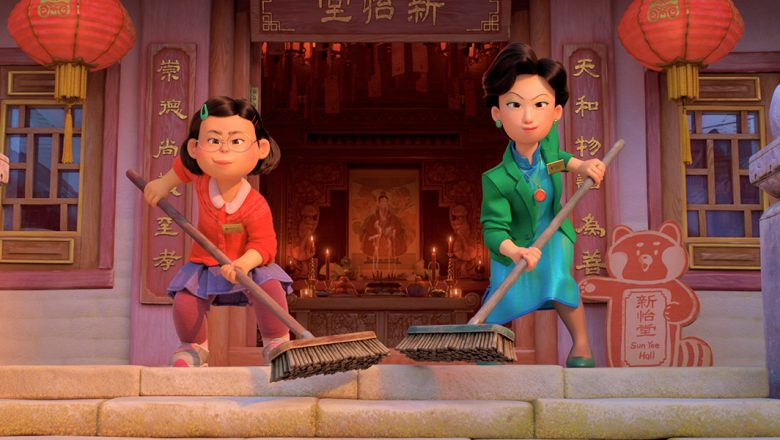 Mei working alongside her mother
Mei working alongside her mother
This film culminates with an incredibly heartfelt and loving moment. Mei learns the struggles that her mother went through and how similar they both felt as teenagers.
They carry conflict as any parent and teen child would. Despite this, they come to an understanding and learn to accept and support each other wholeheartedly. They also allow room for vulnerability and emotions in their relationship.
Representation of Chinese Culture and Early 2000s Teens
"Turning Red"'s animation, artistic direction and cinematography are exceptional.
Precise details permeate throughout the film.
What stands out are the background elements representing Mei’s Chinese heritage. It also has distinct early 2000s trends that anyone growing up in that period would recognize.
The film is chock-full of things like Tamagotchi, jelly and beaded friendship bracelets and black tattoo chokers.
As someone who is nostalgic for this time period, I found myself immersed in the world that Shi built. A standout moment was the change in animation style from modern 3D to one depicting traditional Chinese ink paintings.
In addition to these aspects, I found myself thrilled by the reference to popular Chinese network TVB. Plum blossoms are also throughout the film.
As the national flower of China, the plum blossom represents perseverance during hardships. It mirrors Mei’s struggle to balance her family responsibilities with her newfound desire for freedom.
Additionally, I loved that Mei’s family spoke Cantonese.
Many films based on Chinese culture showcase Mandarin as the language of choice. As a fellow Cantonese speaker, I was delighted in the representation.
The Blend of Chinese Instrumental Score and Modern Soundtrack
The backing score of "Turning Red" was based on traditional Chinese music.
I found myself linking the music to Chinese dramas I watched as a kid.
What especially stood out to me was the blend of this traditional score with modern hip hop elements.
The music was representative of Mei’s inner conflict in the beginning. Later it symbolizes how she balances these two sides of her.
The music was also very reminiscent of the soundtrack from "Genshin Impact." The game also blends modern trap and hip hop beats with traditional Chinese instruments.
In addition to the score, the official soundtrack was written by Billie Eilish and her brother, Finneas O’Connell.
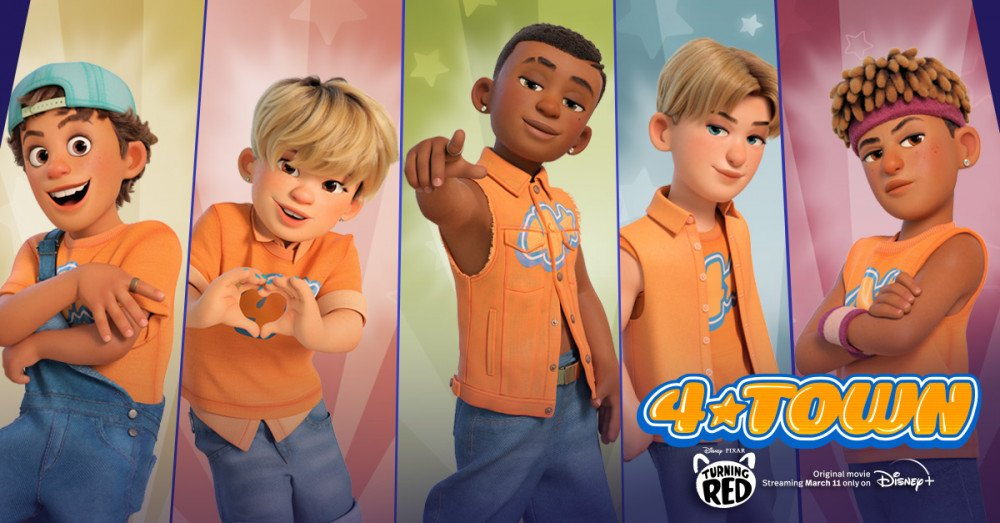 "Turning Red"'s fictional boy band 4*Town
"Turning Red"'s fictional boy band 4*Town
Honoring Your Familial Roots
As a fellow child of a Chinese immigrant family, this film resonated with me in a deeper way than any other coming-of-age film could.
In addition to the surface-level Chinese references, the overall tone of the film was something that many of my friends and I went through in our teenage years.
A perseverant theme of the film was honoring your parents without forgetting to also honor yourself.
This is Mei's main conflict, as she continuously compromises her own values and inner emotions. She hides her feelings from her mother as a way to honor and respect her family.
Her friends invite her to social gatherings. But Mei misses out on these opportunities because of her family’s focus on responsibilities at home and maintaining grades.
The Struggles of Chinese Immigrant Parents and Their Children
Mei struggles with the high expectations of her mother, but continues to put on a smile and say everything is fine. This is common with many children of Chinese families.
However, Mei is not the only one to avoid talking about her emotions. Her mother hides her own feelings from Mei as well.
This fosters an underlying conflict as the negative feelings in their relationship are built up but never released.
When they do come to an understanding, her mother finally recognizes that her being overly harsh on Mei causes Mei to become harsh on herself.
As Mei encounters situations she struggles with, she blames herself and questions why she isn’t good enough. This is something that I related to immensely.
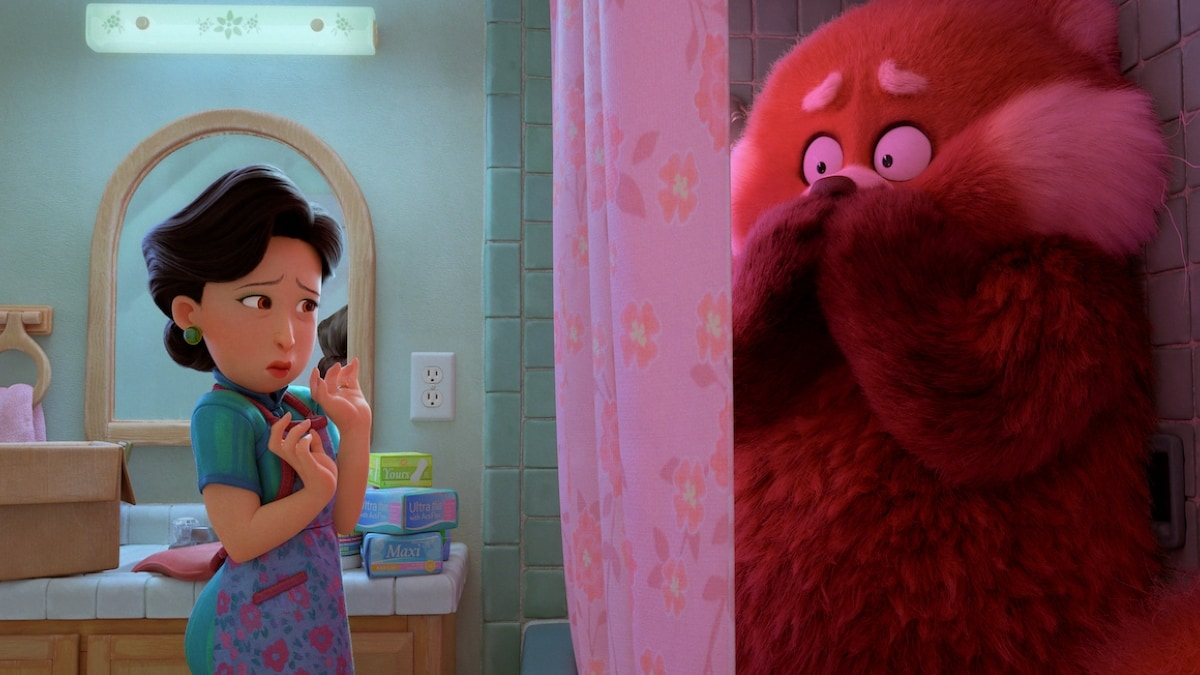 Mei hiding her red panda from her mother
Mei hiding her red panda from her mother
When the red panda is revealed, Mei can no longer control her emotions. This leads to completely honest and vulnerable emotions directed towards her mother.
This comes as a surprise to both of them, but allows for a breakthrough in their relationship.
The red panda is symbolic of Mei’s inner self. It allows her to say and feel the things she could never express before. It creates a new path for the relationship she carries with her mother.
The panda shows her how to control her emotions while learning how to express them properly without hiding.
A Love Letter to Chinese Culture and Growing Up
"Turning Red” is a groundbreaking film. It is Shi’s love letter to both her culture and the journey from adolescence to adulthood.
The movie is filled to the brim with Chinese cultural references. It portrays the feeling many children of immigrant parents go through as they discover their independence.
This film is definitely worth a watch.
The film took me through an emotional rollercoaster while reminding me of my own childhood.
The representation of Chinese culture is beautiful and woven masterfully throughout. The details add even deeper layers of meaning to Chinese viewers.
Though comedic and unconventional, I found the movie to also be largely relatable and a fresh addition to Pixar’s catalog.
It’s free to watch on Disney+ right now, so what’s stopping you? Gather your family and friends and sit down as “Turning Red” takes you through a wonderful journey!
[zombify_post]



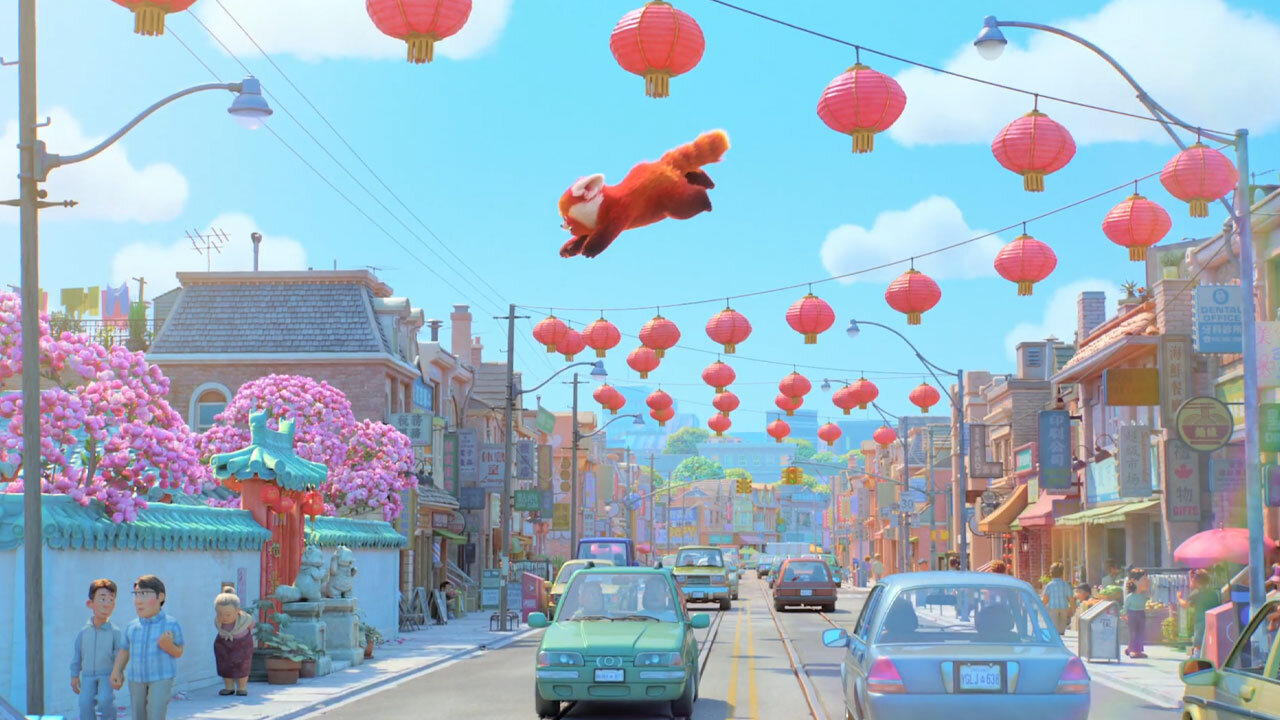
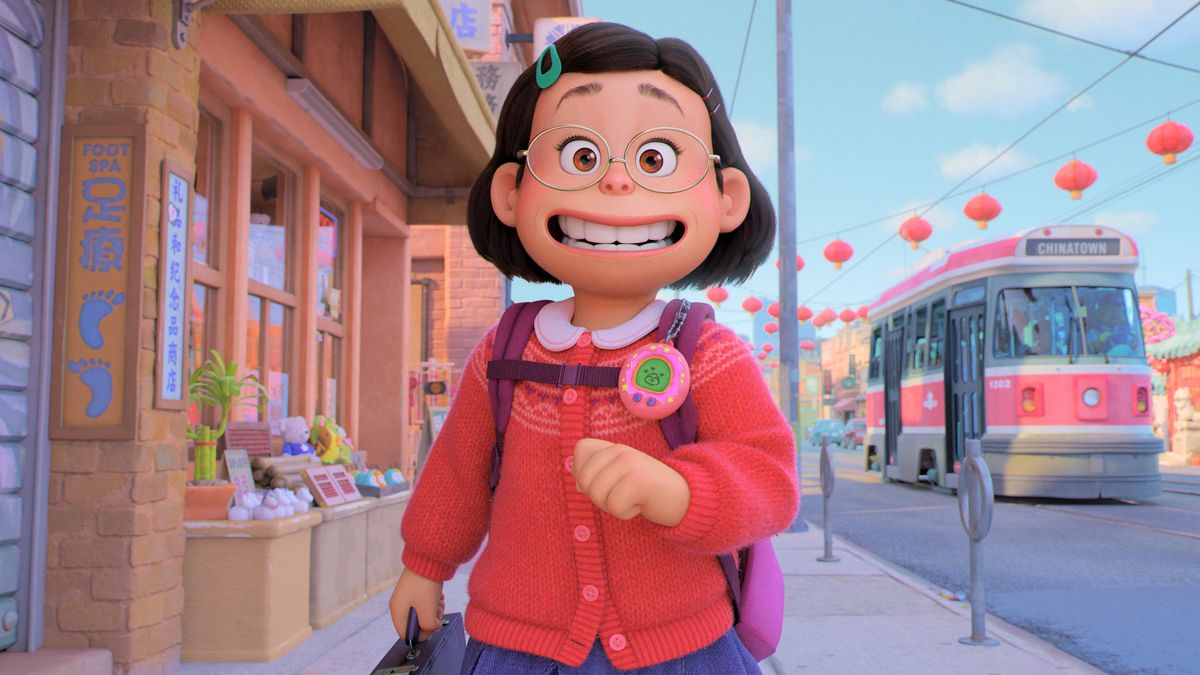
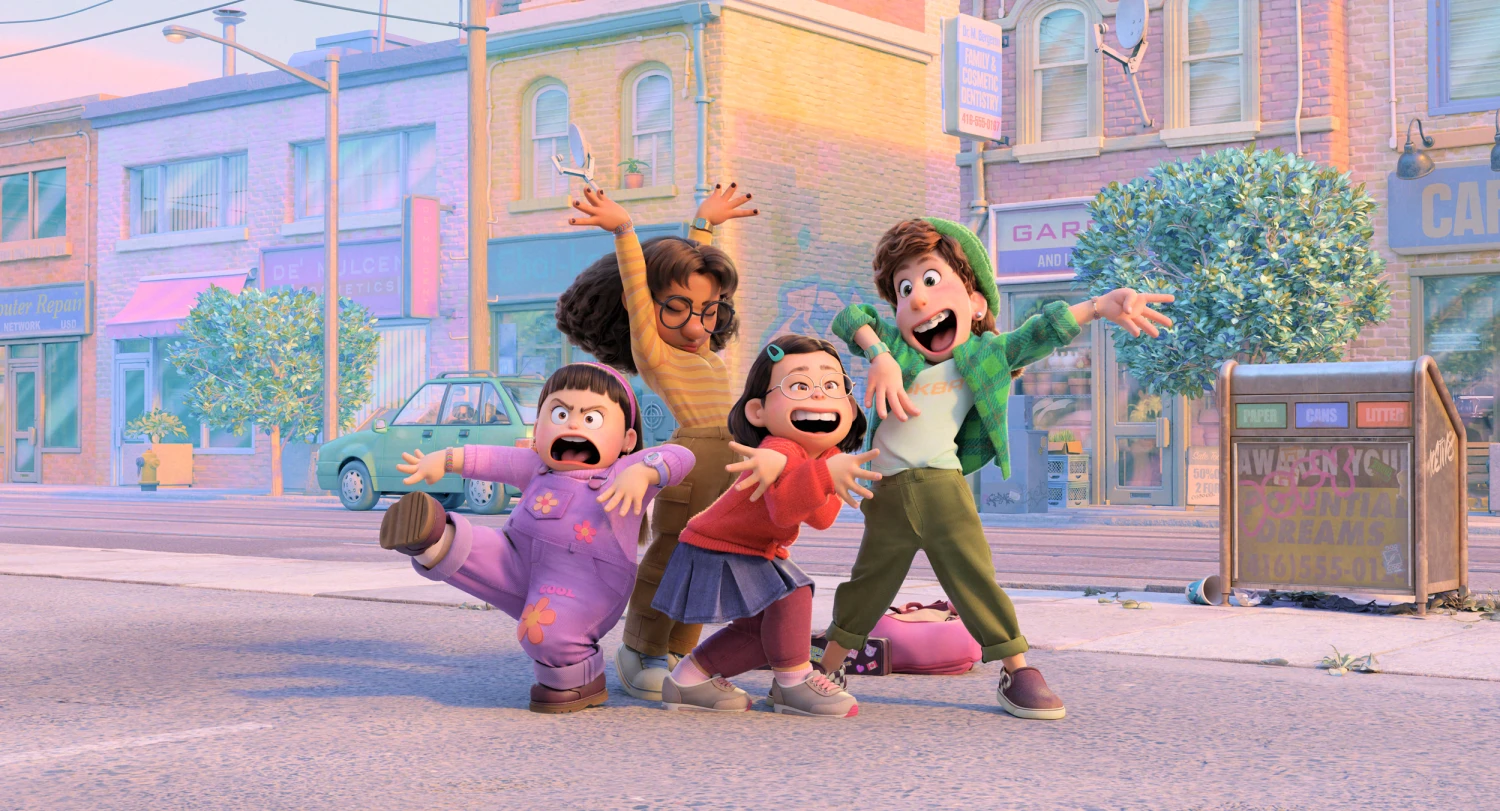
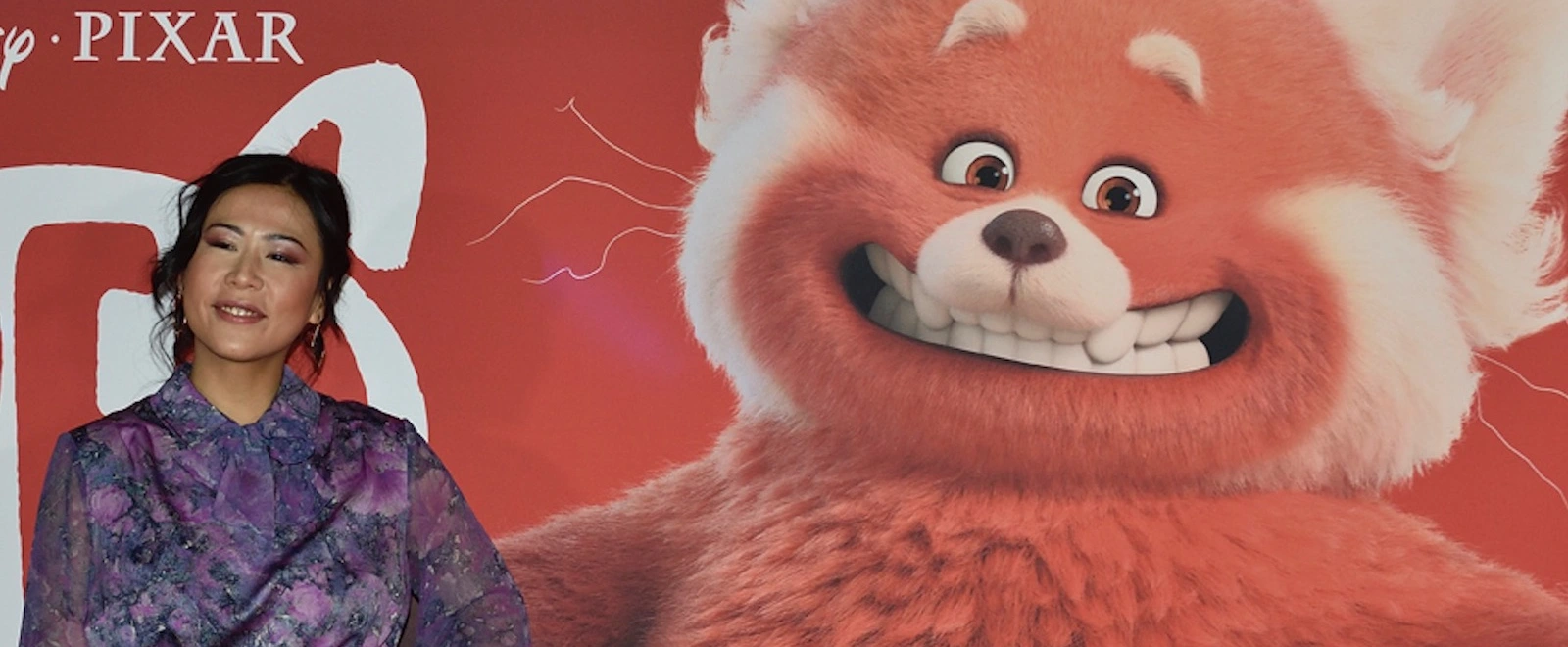
0 Comments